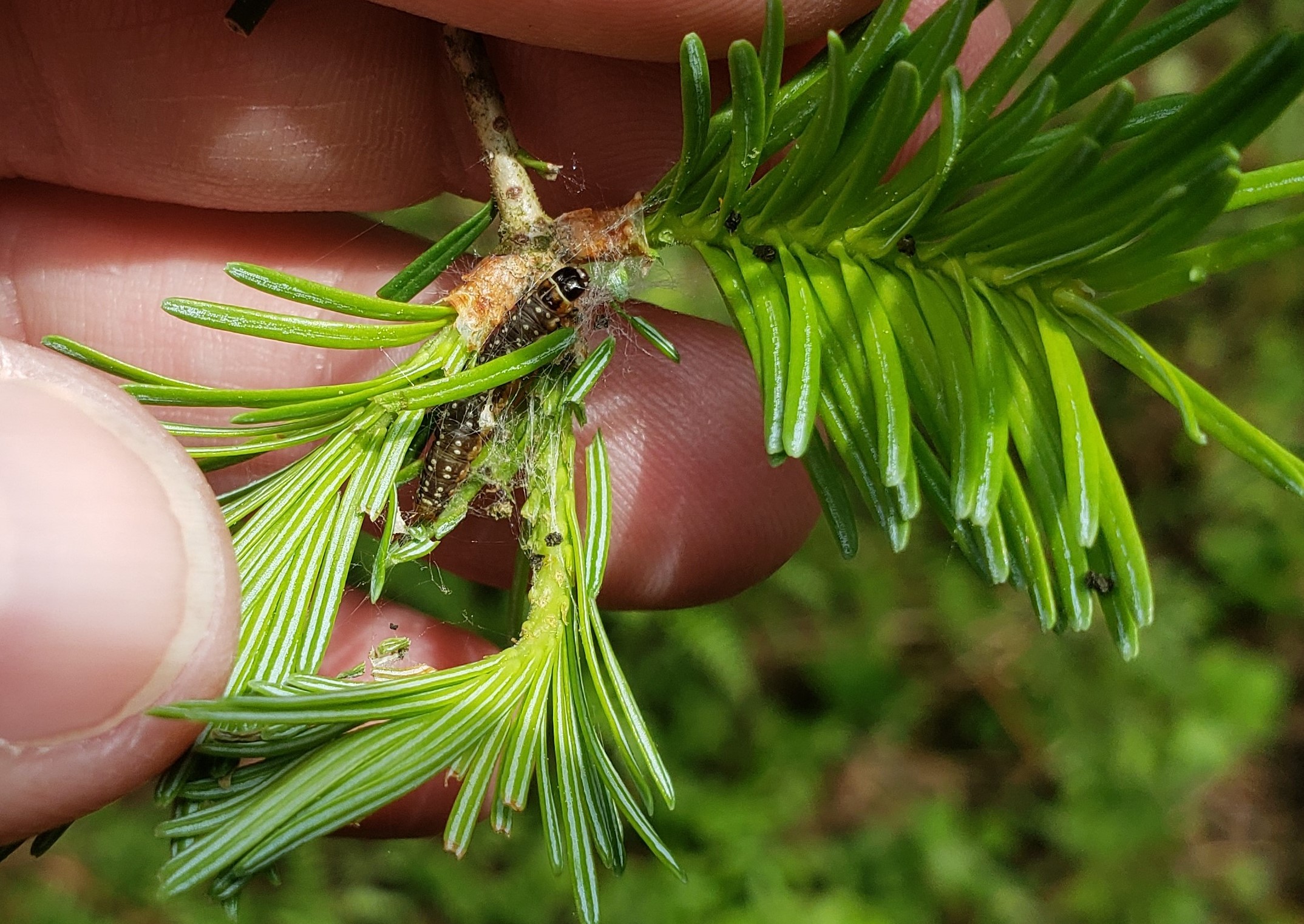By Linda Williams, DNR Forest Health Specialist, Woodruff, Linda.Williams@wisconsin.gov or 920-360-0665
Spruce budworm is a native insect with periodic outbreaks that defoliate spruce and balsam fir in the Midwest. While these caterpillars have pupated and moths are already emerging to mate and lay eggs, spruce budworm defoliation is now becoming noticeable in northern and central Wisconsin as clipped needles stuck in caterpillar webbing turn rusty red.

Spruce budworm larvae had webbed together the new growth. Note some clipped needles in the webbing that will turn rusty red in color. Photo: Wisconsin DNR
Outbreaks occur every 30-50 years, and each outbreak lasts for an average of 10 years. Our previous outbreak ran from 1970-1980, and our current outbreak began approximately in 2012. Unfortunately, it appears populations are still going strong, and we are unsure when they will collapse again. Whether climate change plays a role in outbreak duration is unknown.
Mature balsam fir and spruce are preferred hosts, although younger trees can be defoliated as well. Repeated defoliation causes top-kill and eventually whole tree mortality. Balsam fir stands or stands with a heavy component of balsam fir are often more severely impacted.
Forest managers should monitor balsam fir and spruce stands for signs of repeated defoliation and top-kill. After three years of significant defoliation or additional years of lighter defoliation, you may see dieback in the tops of trees. If trees are missing more than 75% of their needles or if the stand has been heavily defoliated for more than three years (including the current year) foresters should consider salvage harvests to capture value from affected trees.
Homeowners with just a few spruce or fir trees to protect can treat them with insecticide. The biological insecticide Btk, as well as general insecticides, will work on the caterpillars. Defoliation is often most severe in the upper portions of the tree, so homeowners should plan accordingly to make sure the entire tree is treated. Certified arborists often have equipment that can reach to the top of trees. Treatments need to be done early in the spring when the caterpillars are still small. By the time you see the rusty red color showing up in the trees, the caterpillar damage is already done and spraying will not be effective.

